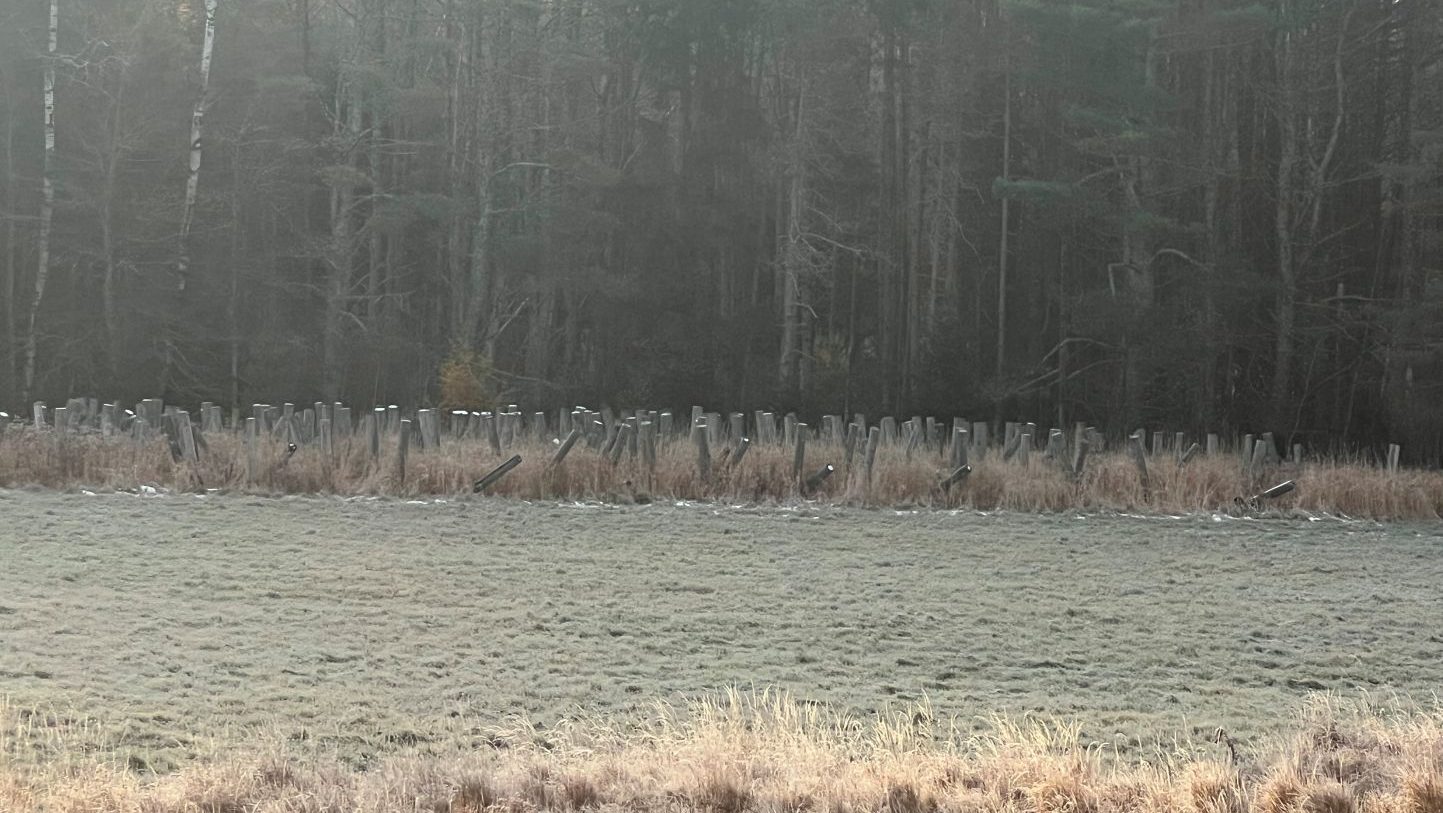
What are those posts in the field on the way to Hannafords in Old Town? 38 years of MAFES research!
Have you ever been driving down Stillwater Avenue on your way to Hannaford’s, the YMCA, or downtown Old Town and wondered, what are those posts in the field? Maybe your child asked you the question as they watched deer frolic in and around the posts?
Turns out these posts have been part of a long-term Maine Agricultural and Forest Experiment Station (MAFES) research project. Dr. Barry Goodell, Professor Emeritus in the UMaine, Sustainable Materials and Technology program in the School of Forest Resources, erected these posts in 1987 in the Demeritt Forest fields as part of a study investing spruce durability under various treatments. The posts simulate full size utility poles, and their installation was originally funded by Central Maine Power (now Avangrid) and Northeast Utilities (now Eversource). Goodell is now retired but keeps his hand in research, and is currently seeking support from industry for a 40-year full inspection of the poles in 2027.
Spruce is known to treat poorly using conventional pressure processes and has a reputation for non-durability. In his study, Dr. Goodell used a conventional pressure treatment, but supplemented that process with a variety of physical treatments that included center-boring, kerfing, and incising, but also with several different diffusible preservatives in the interior of the poles. The poles have been periodically inspected but basically have been left exposed to the elements now for decades. A visual investigation in October 2025 shows that many of the treated spruce poles with appear to be performing well, comparable to southern pine poles that are also being used as “controls” at the test site. Dr. Goodell believes this research could open new markets for spruce timber and demonstrates how internal diffusible wood treatments can potentially be used to supplement pressure treatment in hard-to-treat species. Additionally, this work highlights the importance of pressure treatment in the long-term protections of difficult to treat species like spruce.
To learn more, check out Dr. Goodell’s video of his visual inspection from October 2025.

